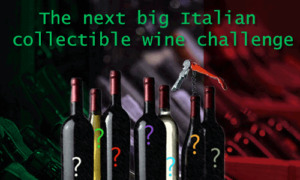Ready for the surprising quality of Domaine Karanika’s sparkling wines?
Greek Bubbels
The upcoming wine region of Amyntaio in the far north of Greece attracted newcomers Laurens (half-Greek) and Annette Hartman to make high-quality wines, sustainably. It was not long before people such as Tom Stevenson, a leading authority on Champagne and sparkling wines, started to pay attention to Karanika’s world-class sparkling wines.

Philosophizing on a Greek expression & the start of Domaine Karanika
There is an expression in the Greek language I particularly like. Grab an Egg and Shave It (πιάσ’ τ’ αβγό και κούρευ’ το). Meaning: there is no escaping a challenging situation—you might as well try shaving an egg, indicating that someone is facing a seemingly impossible task. When Dutch nationals Laurens Hartman and Annette van Kampen left Holland in 2004 with a strong desire to produce high-quality wines in Greece, later specified as traditional method sparkling wines of the highest quality, they were clearly shaving an egg.

Ancient Greek roots
Laurens’ love for low alcohol, high acidity wines and the Greek red, indigenous xinomavro grape variety led them to Greece, the birth country of Laurens’ mother Katerina Karanika. During a stay in Greece, Laurens and Annette decided to take a closer look at the Amyndeo or Amyntaio region, about a two-hour drive northwest of Thessaloniki. In 2006 Laurens and Annette found their ideal geographical environment in Amyntaio, Macedonia, a place not known for quality sparkling wines. Local grape growers did not believe in quality wine from Amyntaio, let alone quality sparkling wines. By the 1990s, Angelos Iatrides (Alpha Estate) and Yiannis Boutaris (Kir-Yianni) had grasped the potential of the forgotten vineyards in Amyntaio with their ancient, ungrafted xinomavro and assyrtiko vines.
Amyntaio, named after the ancient king of Macedon, Amyntas III – the grandfather of Alexander the Great – has seen grape cultivation since antiquity. The old vineyards – called Ampelotopia – near Karanika in the village of Levea, or Λεβαια, the ancient capital during the reign of the father of Alexander the Great, is an old vineyard area. Amynteio is also one of the coolest wine regions in Greece.

Newcomers are doing things different
What locals considered an impossible climate to ripen the grapes adequately became an advantage for Laurens and Anette. And, considering the climate change for other wineries too. In the past, the grapes had problems ripening fully because of the cool climate, though that is not the only reason. The use of artificial fertilizers and the aim to squeeze as many hectoliters out of the vineyards as possible to sell as blending material for wines from other areas proved another issue. Laurens and Anette, on the contrary, were not interested in quantity. They wanted to produce high-quality wines in a sustainable manner.
They consider it their mission to contribute to a better image of Greek wine. Laurens is convinced that Greek wines can compete with the best wines in the world. He favours the noble Xinomavro grape, which thrives best in colder, continental northern Greece. Xinomavro has similar characteristics and qualities as Nebbiolo. There is not a lot of colour intensity, yet Xinomavro wines have a complex, rich, enchanting personality and appealing aromas of red and black fruits, tomato and olives. To show its potential, Laurens trained as a winemaker at UC Davis, California and viticulture in Europe. Annette takes care of the vineyards.

A cool region brilliant for making sparkling wine
Surrounded by the imposing high mountains of Vermio, Vitsi and Kaimaktsalan, Karanika’s vineyards are located on a plateau at an altitude ranging from 570 to 750 meters between the lakes of Vegoritis and Petres. Almost cut off from the Mediterranean influence of the Aegean, the climate can be described as continental, with dry, sunny summers and cold, snowy winters.
Additionally, there are the winds. These winds are important for grape growing, explains Laurens. The winds help to aerate the vines, meaning less or hardly any pesticides and fewer diseases. All in line with Karanika’s organic/ biodynamic philosophy toward producing high-quality grapes from the old ungrafted and newer Xinomavro vines, the younger Assyrtiko vines and the almost forgotten variety Limniona. Diseases are dealt with by means of homoeopathic sprays. The soil is revitalized by cover crops, manure from the animals of a neighbouring shepherd, and the left-over grape pomace is used to increase soil fertility.

Reinventing quality
It took about 5 years of organic and later biodynamic work before the vines on Karanika produced grapes of the anticipated quality. The extremely low pH values of the Xinomavro in Amyntaio was perfect for a high-quality bubble. Especially interesting for the production of sparkling wines are the sandy, lime soils in the old ‘ampelotopi’ area of Levea, where Karanika has planted 7 hectares of Xinomavro and Assyrtiko. The white soils there contain a lower layer of marl with particularly notable high calcium content, in composition comparable to Champagne, which gives notably low pH values. In 2009 they decided to make a thousand bottles of sparkling.
As it turns out, this extraordinary wine story does not end here. Winejus is not done yet. In June 2023, we’ll visit Domaine Karanika. For now, I leave you with a story about trying to shave an egg. Was it worth it? I am sure that the Hartman family, who quit their day jobs in publishing to pursue their love of Xinomavro, will answer: “We’re so glad we tried and succeeded, in spite of everything”.



